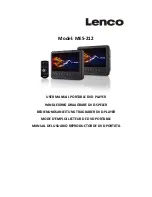
Configuring the internal baseband source
R&S
®
SMM100A
170
User Manual 1179.1341.02 ─ 05
Note:
There is no readable representation for binary values in this document. This
is why we use the sequence
I0Q0I1Q1...InQn
to characterize the binary code in
the present example.
The following figure shows this waveform in a data editor.
Example: C-program for creating a waveform file
C-program
SICO.cpp
for creating the file
SICO.txt
containing 20 sine and cosine
pairs, converting them into binary data and creating the waveform file
SICO.wv
.
// SICO.cpp
// Defines the entry point for the console application
#include "stdafx.h"
#include <stdlib.h>
#include <stdio.h>
#include <math.h>
int _tmain(int argc, _TCHAR* argv[])
{
const unsigned int samples = 20;
const float pi = 3.141592654f;
int i;
// SICO.txt
// Creating the file SICO.txt containing 20 sine and cosine pairs
float grad, rad;
FILE *fp;
fp = fopen("SICO.txt", "w");
if (fp == 0)
return;
for (i=0; i<samples; i++)
{
grad = (360.0f / (float)samples) * (float)i;
rad = grad * (pi / 180.0f);
fprintf(fp, "%f %f\n", sin(rad), cos(rad));
}
fclose(fp);
Using the arbitrary waveform generator (ARB)
















































